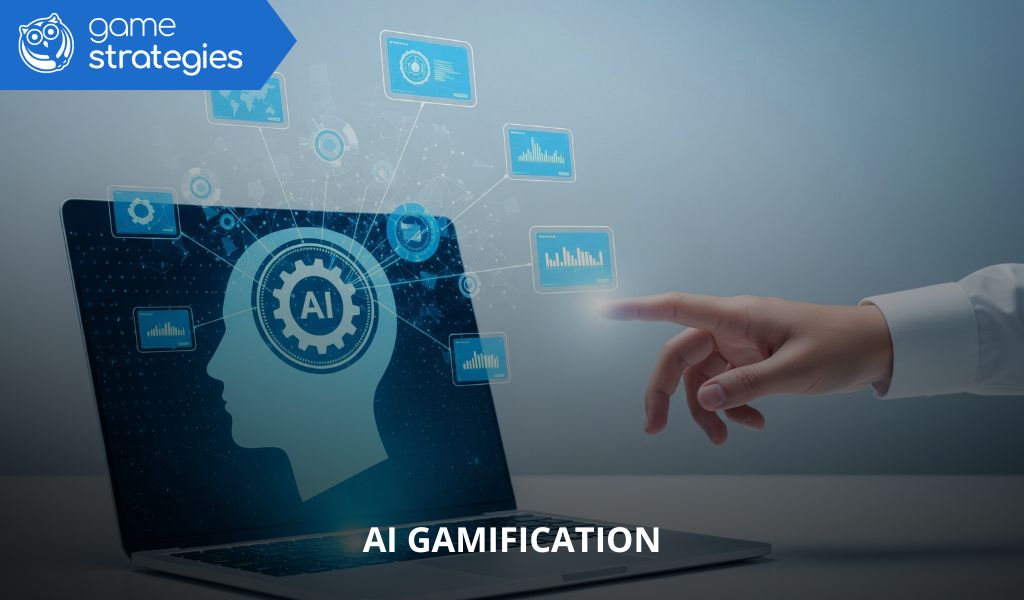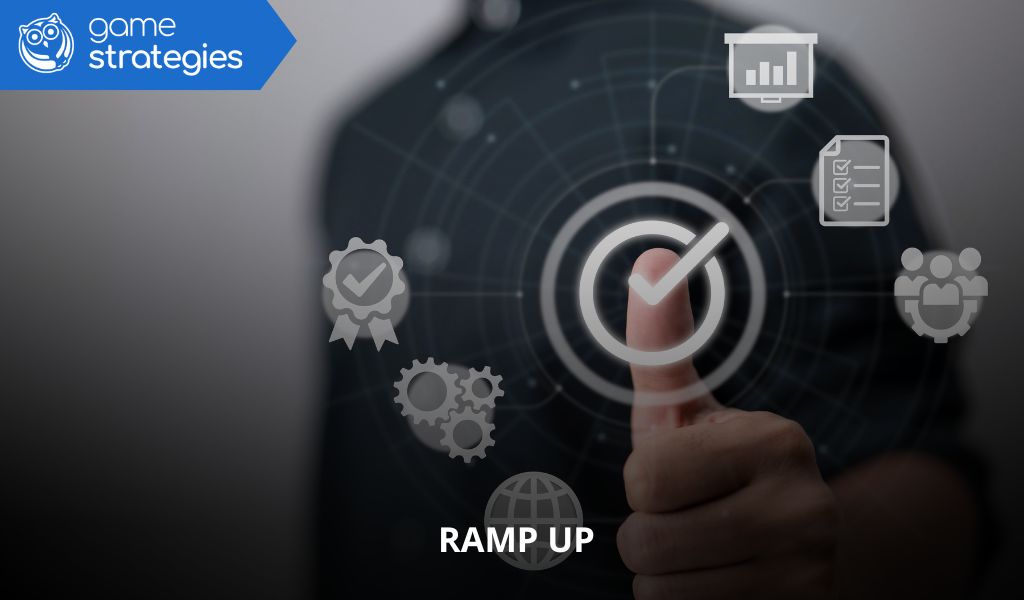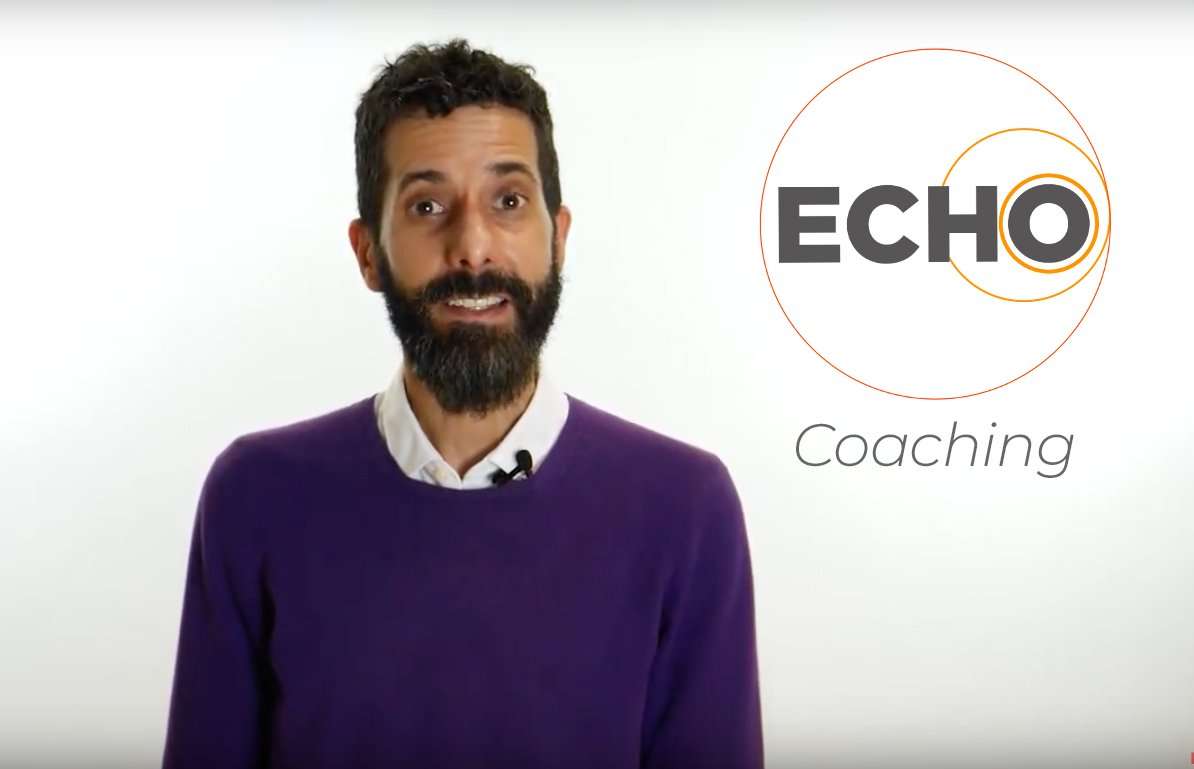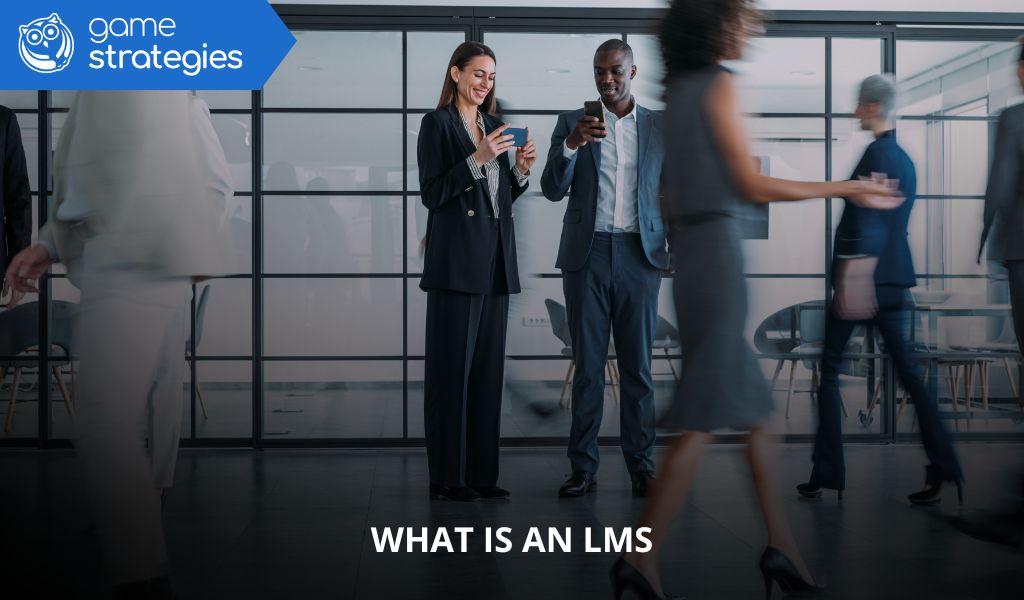Corporate training is evolving at an unprecedented pace. The combination of AI gamification not only increases motivation but also enables personalised learning and more accurate measurement of results.
Game Strategies is a pioneer in integrating these two disciplines to create immersive, effective, and strategically aligned learning experiences for organisations worldwide.
What is AI gamification?
Definition and differences from traditional gamification
Gamification applies game mechanics to non-entertainment contexts—such as corporate training—to improve engagement. By adding AI to corporate training, the system adapts in real time to difficulty, content, and learning pace—something traditional gamification cannot achieve.
Risks and best practices in implementation
While its benefits are evident, AI gamification requires careful implementation:
- Avoid overstimulation and excessive game elements.
- Design with a clear purpose aligned to business objectives.
- Ensure compliance with data privacy and security standards.
Best practice: Work with specialised providers such as Game Strategies, which combines neurodidactic design with secure technological development.
Why AI gamification works in corporate training
Motivation, engagement, and knowledge retention
By integrating game dynamics with intelligent personalisation, both intrinsic and extrinsic motivation mechanisms are activated. This improves engagement and increases course completion rates.
Real-time personalised learning
AI analyses user performance and automatically adjusts content. This adapts training to different experience levels, learning styles, and languages, reinforcing a strong learning culture within the company.
More accurate metrics and ROI
The combination of gamification and AI facilitates advanced data collection, precisely measuring impact and justifying training investment with clear ROI indicators.

How to apply AI gamification step by step (Game Strategies model)
1. Diagnosis and definition of objectives
Every project begins with a thorough analysis of the company’s current situation, identifying immediate training needs as well as long-term strategic objectives. Meetings with HR, training managers, and leadership help define competencies, key performance indicators (KPIs), and business expectations.
This stage ensures the project is aligned with corporate culture and that every game mechanic has a clear purpose—whether boosting motivation, reducing turnover, improving customer service, or accelerating onboarding.
2. Designing a personalised gamified experience
Once objectives are defined, a tailored experience is created. Game Strategies does not use standardized models; instead, it builds immersive narratives that reflect the brand’s values and connect with employees’ identity.
The experience includes engaging game mechanics (progressive challenges, collaborative missions, personalised rewards) and a visual design consistent with corporate aesthetics. Difficulty levels are structured to create a motivating progression, preventing frustration while sustaining long-term commitment.
3. Technological implementation and multilingual adaptation
The next stage involves launching the platform and technological tools. Game Strategies integrates interactive simulators and collaborative gamified environments, accessible from any device—desktop, mobile, or tablet.
Multilingual adaptation allows international companies to unify training across countries while maintaining quality and engagement. The technology is scalable, catering to both large enterprises and SMEs, and integrates seamlessly with internal business systems.
4. Evaluation with the Kirkpatrick model from the start
Unlike traditional approaches, evaluation begins at the outset. Using the Kirkpatrick model, four levels are measured:
- Participant satisfaction.
- Knowledge acquisition.
- Application of learning in the workplace.
- Tangible business results (sales, productivity, customer satisfaction, etc.).
This continuous evaluation ensures training investment translates into measurable improvements.
Game Strategies services aligned with each stage
Corporate training through personalised video games
Programmes designed as video games that apply neuroscience principles to boost knowledge retention and engagement. Each training project adapts to the company’s sector and roles, turning learning into an entertaining and effective experience.
AI role plays and simulators for sales teams
Realistic, AI-powered scenarios allow employees to practise client conversations, price negotiations, objection handling, and conflict resolution. These simulations adapt to each employee’s level, providing real-time feedback and enhancing both technical and soft skills.
Onboarding through immersive video games
Gamified onboarding transforms employee induction into a positive and motivating journey. It shortens adaptation time, conveys company values more effectively, and supports smoother team integration.
MARS: turn-based collaborative learning
A unique system that promotes strategic collaboration among teams. Participants engage in turn-based game dynamics, with AI evaluating and recommending improvements in real time. This not only reinforces learning content but also develops communication, leadership, and teamwork skills.
Global benefits of applying AI gamification
- Significant increase in motivation and training participation.
- Learning adapted to each user’s profile, style, and pace.
- Reduced turnover thanks to a more engaging and inclusive training experience.
- Precise measurement of ROI with clear data for leadership.
- Positive impact on mental health by reducing fatigue from traditional training and increasing job satisfaction.
In an era where digital corporate training is a key factor for competitiveness, the combination of gamification and AI is one of the most powerful tools for developing skills, boosting engagement, and measuring results accurately.
With Game Strategies, organisations transform the way they teach and learn—integrating intelligent game-based experiences that not only train but also motivate and retain talent.
¿De cuánta utilidad te ha parecido este contenido?
¡Haz clic en una estrella para puntuarlo!
Promedio de puntuación 0 / 5. Recuento de votos: 0
Hasta ahora, ¡no hay votos!. Sé el primero en puntuar este contenido.









